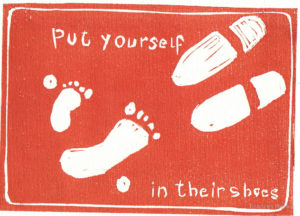Being an interior designer, or in fact, any designer is not a mean feat! Coming up with new ideas and innovating in materials, furniture and designs is a difficult task. In comparison to other professions, interior designers do not have a fixed syllabus and memorization of the course work will not help them in the long run. They have to research and analyse the problem set in front of them by the clients, ideate and think of a solution while making the solution look good! Whew! So, how do you do that? How do you become the best interior designer in the business? Let’s find out!
1. Put yourself in their shoes!

Making a home, or an office, is a huge investment for people, and sometimes it’s their lifelong dream. They have a lot of ideas, opinions and suggestions for their own space, which as an interior designer, it is very important for you to take into account. The personal taste of a client(s), their choices, their personality dictate a lot of design decisions. Hence, it is important to “Put yourself in the client’s shoes” and think from their point of view. Asking yourself questions like, “What colors do they like?”, “Will straight lines go with his personality or should I adopt fluidity in my design?”, “Will he like wallpaper or a plain wall full of pictures?” is a definite must! Try to know your client and his taste and incorporate the same in your design. Designing with empathy is key to reaching the best output.

2. Segregate his wants and needs!

Most of the time, the client knows what he wants, but he doesn’t know what he needs. That’s upto the designer to take care of. For example, a client may want a good view or central air conditioning, but its the designer’s job to see he gets good ventilation, sufficient light (both natural and artificial) etc. in a space. Make a list of the client’s wants and his needs. In this way, you can set priorities and this list will help you make a lot of design decisions as well. Strike a balance between the wants and the needs, and your design is sure to be a win-win! Go back and forth with a client to make sure you know all his requirements and likes to ensure a great finished product.
3. Consider all the factors!

A design is successful, not just because of the design itself, but also because it triumphs all the other factors involved during the design. Remember that constraints are a part of the job and learn to work with them. You may have come up with a brilliant design which suits the owner’s personality and takes care of all their wants and needs. But, is it something he can afford? Can the design be executed in th stipulated amount of time? Are those fancy tiles available in the city? A design has to be feasible and practical, for it to be successful. Considering all the aspects in your design, will also help you convince your client, for it.
4. Ideate!

After all the research is done, its time to sit and ideate. You can find inspiration from nature, books, music, internet etc. and sketch out various permutations and combinations. Analyse every design outcome and weigh out the pros and cons of each. Remember, the first idea isn’t always the best idea. So keep thinking till you’ve reached a suitable design. Once that happens, you can draft the primary design on your computer and get the same approved from your client. Redesign in case some suggestions come up. Never be hesitant to approach the design differently. After all, your work should be flawless.
5. Convince the Client!

Many underestimate this step and it’s a huge mistake! Yes, it is true that you need to incorporate a client’s suggestion from time to time. It’s his space at the end of the day. But, he hired you for your expertise in design, color theory, furniture making etc. You need to defend your design and convince your client that it’s the best for him. Ofcourse, convincing the client doesn’t mean that you force your ideas upon him, it just means that you know every why and how of your design. For example, a client may ask you, “Why have you chosen this particular orientation for the room?” You better have a good answer. Shrugging your shoulders with a look of confusion on your face is not going to help at this point. Knowing your design inside out, and preparing in advance for all the questions the client may throw at you, is a good way to defend your design and make sure it gets executed.
Tips for convincing the client:

- Use visual tools so that he understands the design. A lot of softwares such as Sketchup, Autocad, Photoshop etc. are available which will help the client better visualise the space.

- Make a budget and try to stick to it. Carrying a rough budget to support your design, will go a long way in convincing the client that its practical and feasible.

- Give the client some power or say in the design. Show them some reference images to explain your design and give them the leeway to decide. For example, in a toilet design, you can suggest the use of tiles, but leave it upto him to select the same. You may accompany the client during selections, to make sure he goes with a good looking one.

- Make a timeline, to keep things on site organized and on time. Make it clear to on site labors and staff, that all deadlines must be strictly followed. This will put a good impression on the client and build trust.
6. Play it Safe!

It’s important to protect your own interests and play it safe. Before starting work on the design, draw upa contract between you and your client and get it signed and approved. Explain the design in detail, your working style, show him your work portfolio or take him around your existing sites / projects. Ask for a small advance before starting work, to ensure the client is serious about the project. Payment stages should be predecided and mentioned in your contract, which is another reason to follow deadlines in your work. Take approvals and signatures on all the drawings and designs you send to site, to make sure your client is in the loop of whatever is happening. Keep your work organized, by sending proper emails and saving information that you have communicated in the emails. All the paperwork, should be as clean and sophisticated as your design!
Join Cindrebay School of fashion and interior design, today, to become an all rounded professional and gain guaranteed success! With branches all over India, Cindrebay, is a name to look out for!

Thats good to know Akshay! Thank you for being a loyal reader!